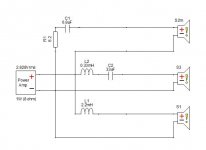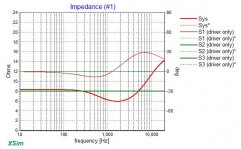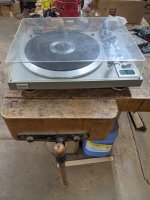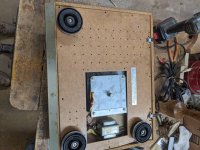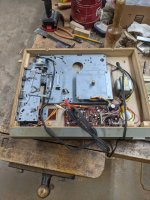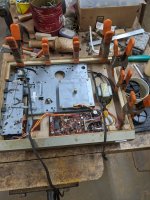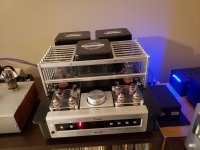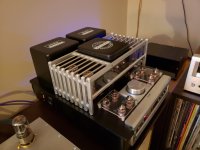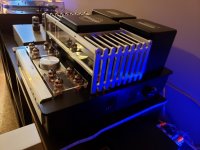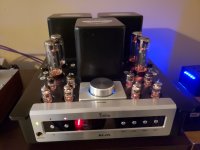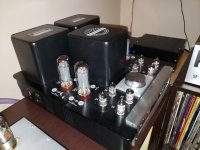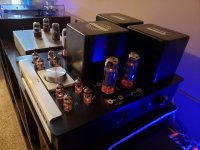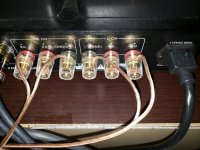Hello, first post and only started looking at building crossovers the last couple of days so please excuse any rookie mistakes.
I have a Ruark Dialogue One centre and Ruark Prologue Fronts with Ruark Icons rears.
I am really concentrating on the Dialogue centre at the moment to start with and if I don't mess it up completely will do the fronts.
Searching for info is difficult with the age of the speakers 1997 but a few bits I have found.
DESCRIPTION
Frequency Response: 62Hz - 22KHz +/- 3dB (free space conditions)
Nominal Impedance: 6 ohms
Amplifier Requirements: 25 - 120 watts
Sensitivity: 89dB/watt @ 1m
Dimensions HxWxD: 17.5cm x 48cm x 21cm
Weight each unpacked: 9Kg
Color finishes: Natural Cherry, Red Cherry, Natural Oak or Black Oak Veneers
Dialogue One
Design Type: Two way with one 28mm fabric dome tweeter, two 5" felted bass drivers, in an infinite baffle type enclosure.
Cabinet: 15mm MDF throughout.
Colour Finish: Oak Finish.
Crossover: Damped second order at 2.8Hz, five element with air cored inductors, both polypropylene and low loss electrolyic capacitors and high power resistors.
Frequency response: 70Hz -20KHz+/-3dB
Nominal impedance: 6 ohms.
Sensitivity: 90dB 2.83v.
Power handling: 150 Watts long term.
Dimensions H x W x D: 17cm x 48cm x 20cm
Weight each: 8Kg
There are also 2 versions which seems to mix up the searches, but I believe I have the original Dialogue One looking at pictures the tweeter was different in the 2nd revision.
So it is a 2nd order 2 way crossover at 2.8khz and it looks like it is similar to the Ruark Epilogue which I have had in bits and taken a picture of the crossover.
Originally I was thinking about replacing like for like with better components but then I thought if I am going to put the effort in to do that I might as well do more.
So using XSim I have put together a 1st order 3 way design because I think the fronts would really benefit from this, so I might as well do the centre the same way.
The original crossovers have a 10w 7.2ohm resistor so I believe this means it is around +6db over the drivers so worked around that with the new crossover.
So my plan is to take some measurements using the gated time window method or as close as I can get to it of the drivers and tweeter separately without the crossover in place and with the speakers in the cabinet so should then know exactly what -/+ I need to deal with and where the distortion starts/finishes for each as well as cabinet effect.
Then tweak the crossover design, I am thinking currently crossing over around 500hz and 4khz.
Does this sound sensible and am I missing anything blinding obvious.
Planning to use Clarity Caps, Mundorf Inductors and Resistors, cost should be around £90 per speaker.
Any opinions / help would be much appreciated.
Cheers
